45 label of nucleotide
Nucleotides in DNA | Science Primer Each nucleotide contains three components: A five carbon sugar A phosphate molecule A nitrogen-containing base. The sugar carbon atoms are numbered 1 to 5. The nitrogenous base attaches to base 1, and the phosphate group attaches to base 5. DNA polymers are strings of nucleotides. Nucleotides - an overview | ScienceDirect Topics 7.6.6 Nucleotides. Nucleotides are bio-chemicals found in mothers' milk consisting of one molecule of phosphoric acid, one molecule of sugar (ribose or dextrose) and one molecule of a purine or pyrimidine. In all, there are five nucleotides produced enzymatically. Nucleotides have been added to some infant formulations to simulate mothers ...
Nucleotides | Types, Examples, Functions & Classification - A Level Biology Nucleotides are the biological molecules that serve as the building blocks of nucleic acids like DNA and RNA. They are essential for all the functions performed by a living cell. Not only this, but they are also essential for transferring information to new cells or the next generation of the living organisms.
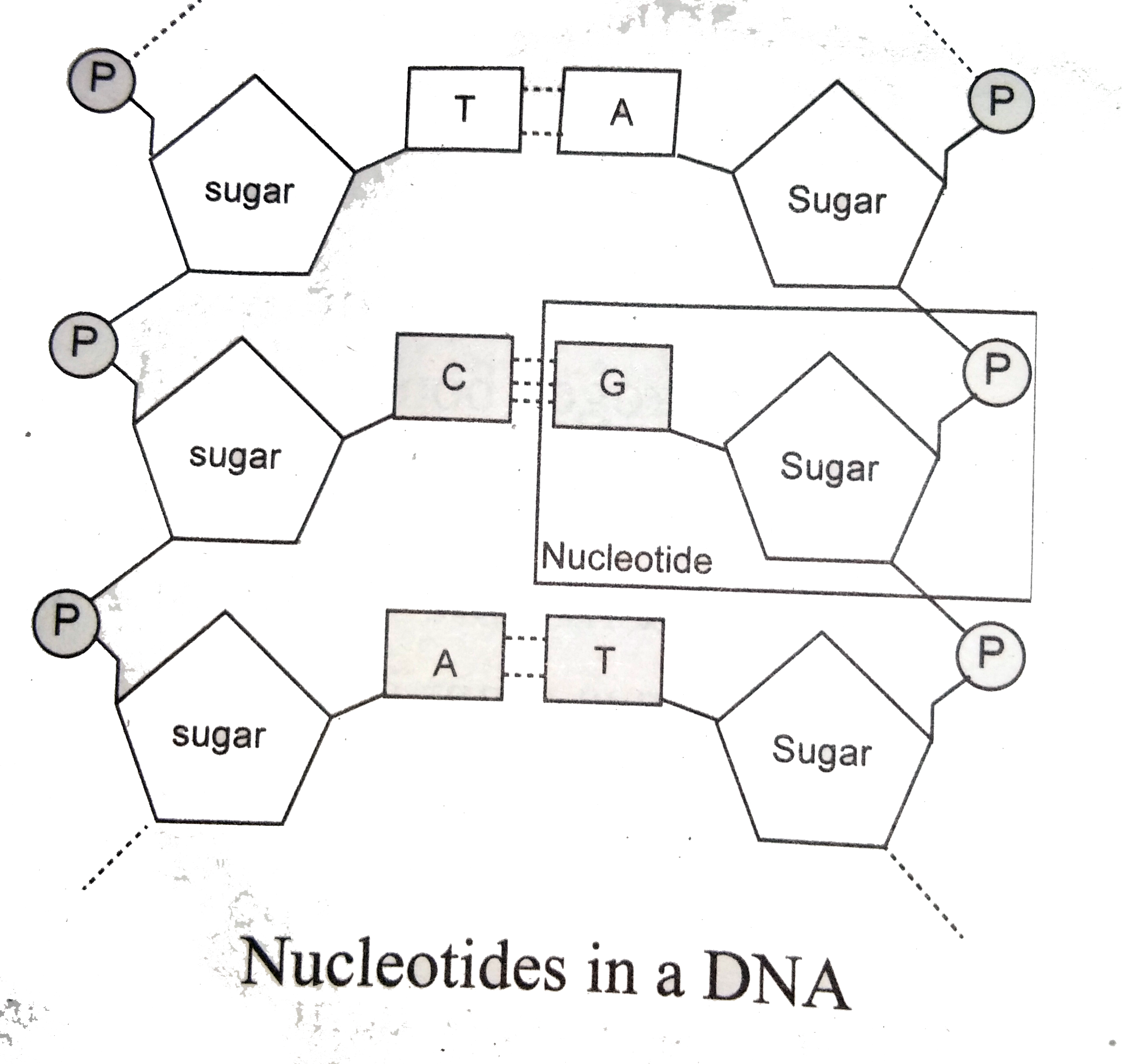
Label of nucleotide
Nucleotide Structure: DNA Diagram | Science Trends Nucleotides are made out of elements like nitrogen and carbon with a nitrogenous base, a five-carbon sugar component, and a group of phosphates. However, there are some important differences between RNA nucleotides and DNA nucleotides. The nitrogenous bases come in one of two different forms - they are either a pyrimidine or a purine. Nucleotide - Definition, Structure (3 Parts), Examples & Function A nucleotide is an organic molecule that is the building block of DNA and RNA. They also have functions related to cell signaling, metabolism, and enzyme reactions. A nucleotide is made up of three parts: a phosphate group, a 5-carbon sugar, and a nitrogenous base. The four nitrogenous bases in DNA are adenine, cytosine, guanine, and thymine. What Is a Nucleotide? Definition, Structure, and Function - PrepScholar Each nucleotide is a molecule, so while the bases are extremely important for how the nucleotide is classified and for its eventual function, they cannot form without the other elements that make up the molecule. One of these elements is simple, five-carbohydrate sugars. A nucleotide can contain one of two sugars: Deoxyribose, a monomer of DNA, OR
Label of nucleotide. How do you draw a nucleotide and label its three basic parts? Explanation: The above structure is a nucleotide. It consists of a: phosphate group. 5-carbon sugar, and. nitrogenous base. Nucleotide - Wikipedia A nucleotide is composed of three distinctive chemical sub-units: a five-carbon sugar molecule, a nucleobase (the two of which together are called a nucleoside), and one phosphate group.With all three joined, a nucleotide is also termed a "nucleoside monophosphate", "nucleoside diphosphate" or "nucleoside triphosphate", depending on how many phosphates make up the phosphate group. 3 Parts of a Nucleotide and How They Are Connected - ThoughtCo Here's the answer for both DNA and RNA . Nucleotides in DNA and RNA Both deoxyribonucleic acid (DNA) and ribonucleic acid (RNA) are made up of nucleotides which consist of three parts: Nitrogenous Base Purines and pyrimidines are the two categories of nitrogenous bases. Adenine and guanine are purines. Cytosine, thymine, and uracil are pyrimidines. What are the Three Parts of a Nucleotide? | Albert.io Nucleotides are made up of 3 parts. The first is a distinct nitrogenous base, which is adenine, cytosine, guanine or thymine. In RNA, thymine is replaced by uracil. These nitrogenous bases are either purines or pyrimidines. Base pairs are formed when adenine forms a hydrogen bond with thymine, or cytosine forms a hydrogen bond with guanine.
Exam 4 61. Draw a nucleotide and label all parts. (see lecture notes) 61. Draw a nucleotide and label all parts. (see lecture notes) Learn with flashcards, games, and more — for free. Nucleotide and Structural Label Identification in Single RNA Molecules ... Here we present a method for direct nucleotide identification and structural label mapping of single RNA molecules via Quantum Molecular Sequencing (QMSeq). The method combines non-perturbative quantum tunneling spectroscopy to probe the molecular orbitals of ribonucleotides, new experimental biophysical parameters that fingerprint these ... The Structure of DNA - University of Arizona The Structure of DNA. Nucleic acids are made up of chains of many repeating units called nucleotides (see bottom left of Figure 1 below). The DNA molecule actually consists of two such chains that spiral around an imaginary axis to form a double helix (spiral.) Nucleic acid molecules are incredibly complex, containing the code that guarantees ... DNA and RNA Probe Labeling | Radiolabeled Nucleotides - PerkinElmer Oligonucleotides can be labeled at either the 3' or the 5' end. Using polynucleotide kinase and ATP-gamma- 32 P, the 5' end is labeled. Using terminal transferase and deoxynucleotide triphosphate labeled on the alpha phosphate, the 3' end is labeled. Traditionally, the isotope of choice has been 32 P, however 35 S has been used successfully.
Label Free Colorimetric Detection of Single Nucleotide Polymorphisms in ... Single nucleotide polymorphisms (SNPs) in genomic DNA are known to be responsible for a number of hereditary conditions3 and cancers4. Nearly all assays for DNA are based on the polymerase chain reaction (PCR), a rapid, inexpensive and simple means of amplifying specific sequence segments from as little as a single copy of DNA to easily ... Labeling Oligonucleotides and Nucleic Acids—Section 8.2 the labeled aha-dutp and aha-dctp nucleotides can be used to generate labeled nucleic acid hybridization probes for many molecular biology and molecular cytogenetics applications, including two-color microarray assays, northern and southern blots, colony and plaque hybridizations, dna sequencing, primer extension, dna and rna amplification and … Use the drop-down menus to label the parts of a nucleotide. Label A ... Biology College answered Use the drop-down menus to label the parts of a nucleotide. Label A Label B Label C Label D Label E Label F Label A is a blue circle, label B is a grey hexagon, label C is adenine, label D is uracil, label E is a pink hexagon, and label F is a blue circle. Answer 26 people found it helpful jarahquiroga Answer: Home - Nucleotide - NCBI - National Center for Biotechnology Information The Nucleotide database is a collection of sequences from several sources, including GenBank, RefSeq, TPA and PDB. Genome, gene and transcript sequence data provide the foundation for biomedical research and discovery. Using Nucleotide Quick Start Guide FAQ Help GenBank FTP RefSeq FTP Nucleotide Tools Submit to GenBank LinkOut E-Utilities BLAST
Use the drop-down menus to label the parts of a nucleotide. - Brainly.com A nucleotide is a molecule composed of a pentose sugar (ribose in RNA and deoxyribose in DNA), a nitrogenous base, and a phosphate group. In DNA, there are four types of nucleotides that contain four different classes of nitrogen bases: Adenine, Guanine, Cytosine and Thymine. In RNA, Thymine bases are replaced by Uracil bases.
DNA Molecule Label Diagram | Quizlet Nucleotide in a nucleic-acid chain, a sub-unit that consists of a sugar, a phosphate, and a nitrogenous base Cytosine The base that pairs with Guanine with DNA Base Pair A pair of complementary nitrogenous bases in a DNA molecule Hydrogen Bonds Bond holding together Nitrogen Bases in DNA Sugar-Phosphate Backbone
Nucleotides and Bases - Genetics Generation Nucleotide Structure Courtesy of the National Human Genome Research Institute. Nucleotides. A nucleotide is the basic structural unit and building block for DNA. These building blocks are hooked together to form a chain of DNA. A nucleotide is composed of 3 parts: * five-sided sugar * phosphate group * nitrogenous base (nitrogen containing)
What is Nucleotide? Definition, Properties, Components & Functions ... A nucleotide is a compound, which can form a polynucleotide chain by the union of nitrogenous bases and sugar-phosphate group. Monomers of nucleotide units are connected via a covalent phosphodiester bond. Nitrogenous bases, i.e. purines and pyrimidine, are attached via weak hydrogen bonds. The bases link with a deoxyribose pentose sugar via an ...
Nucleoid - Definition and Function | Biology Dictionary Nucleoid Definition. The nucleoid is the space within a prokaryotic cell where the genetic information, called the genophore, is found. Prokaryotes are divided into bacteria and archaea, which are both unicellular organisms that contain no membrane-bound organelles. The nucleoid, then, also has no membrane around it.
Nucleotide - Genome A nucleotide is the basic building block of nucleic acids (RNA and DNA). A nucleotide consists of a sugar molecule (either ribose in RNA or deoxyribose in DNA) attached to a phosphate group and a nitrogen-containing base. The bases used in DNA are adenine (A), cytosine (C), guanine (G) and thymine (T).
Solved Correctly label the parts of the two-nucleotide - Chegg Expert Answer. 100% (33 ratings) Transcribed image text: Correctly label the parts of the two-nucleotide nucleic acid depicted Drag the appropriate labels to their respective targets Reset Help 5' position H2C OH in RNA Nitrogen base attached to 1' position 3' position Phosphodiester bond Deoxyribose 2 Phosphate Base.
The 5 Kinds of Nucleotides - ThoughtCo A phosphate molecule A nitrogenous (nitrogen-containing) base Names of Nucleotides DKosig / Getty Images The five bases are adenine, guanine, cytosine, thymine, and uracil, which have the symbols A, G, C, T, and U, respectively. The name of the base is generally used as the name of the nucleotide, although this is technically incorrect.
Label-free discrimination of single nucleotide changes in DNA by ... Label-free discrimination of single nucleotide changes in DNA by reflectometric interference Fourier transform spectroscopy Phenotypic variation - such as disease susceptibility and differential drug response - has a strong genetic component.
The Order of Nucleotides in a Gene Is Revealed by DNA ... - Nature DNA is a double-stranded, helical molecule composed of nucleotides, each of which contains a phosphate group, a sugar molecule, and a nitrogenous base. Because there are four naturally occurring ...
Nucleotide: Structure, Examples and Function - BYJUS Nucleotides are named as Adenylic acid, Guanylic acid, Thymidylic acid, Cytidylic acid and Uridylic acid. Nucleotides are also named as nucleoside mono, di or triphosphate, based on the number of phosphate groups attached to it, e.g. Adenosine monophosphate (AMP), Adenosine diphosphate (ADP) or Adenosine triphosphate (ATP).
What Is a Nucleotide? Definition, Structure, and Function - PrepScholar Each nucleotide is a molecule, so while the bases are extremely important for how the nucleotide is classified and for its eventual function, they cannot form without the other elements that make up the molecule. One of these elements is simple, five-carbohydrate sugars. A nucleotide can contain one of two sugars: Deoxyribose, a monomer of DNA, OR
Nucleotide - Definition, Structure (3 Parts), Examples & Function A nucleotide is an organic molecule that is the building block of DNA and RNA. They also have functions related to cell signaling, metabolism, and enzyme reactions. A nucleotide is made up of three parts: a phosphate group, a 5-carbon sugar, and a nitrogenous base. The four nitrogenous bases in DNA are adenine, cytosine, guanine, and thymine.
Nucleotide Structure: DNA Diagram | Science Trends Nucleotides are made out of elements like nitrogen and carbon with a nitrogenous base, a five-carbon sugar component, and a group of phosphates. However, there are some important differences between RNA nucleotides and DNA nucleotides. The nitrogenous bases come in one of two different forms - they are either a pyrimidine or a purine.


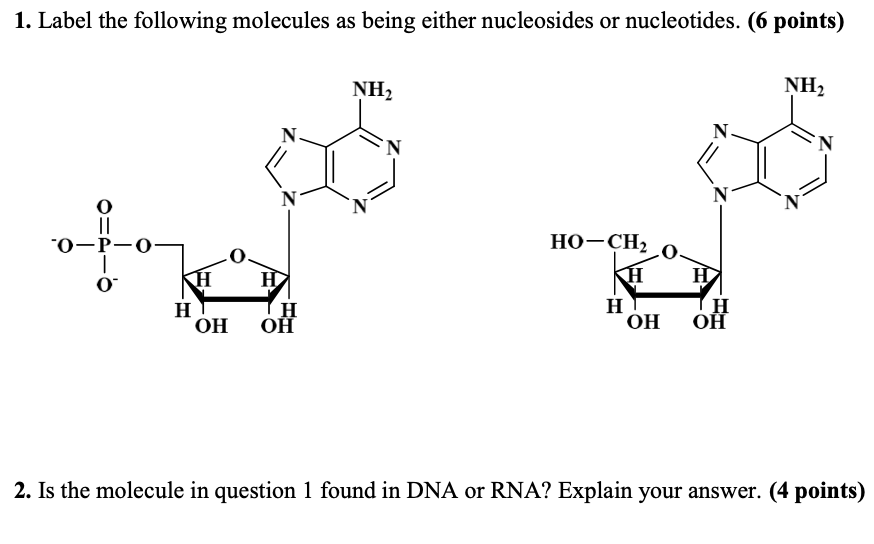


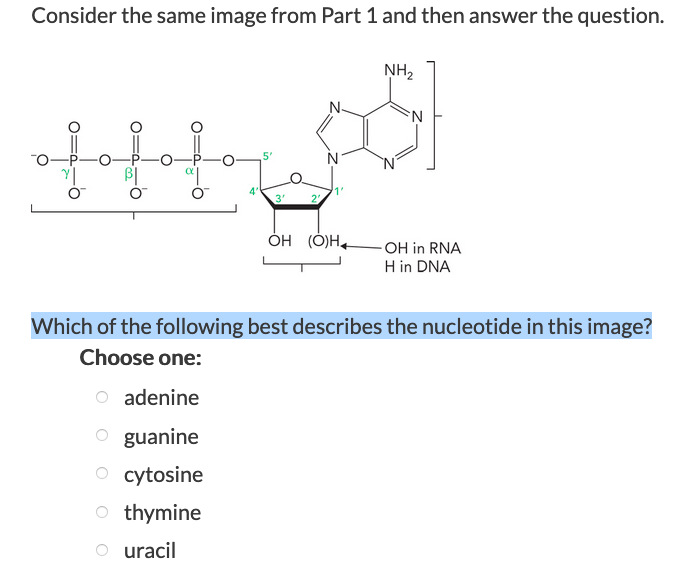




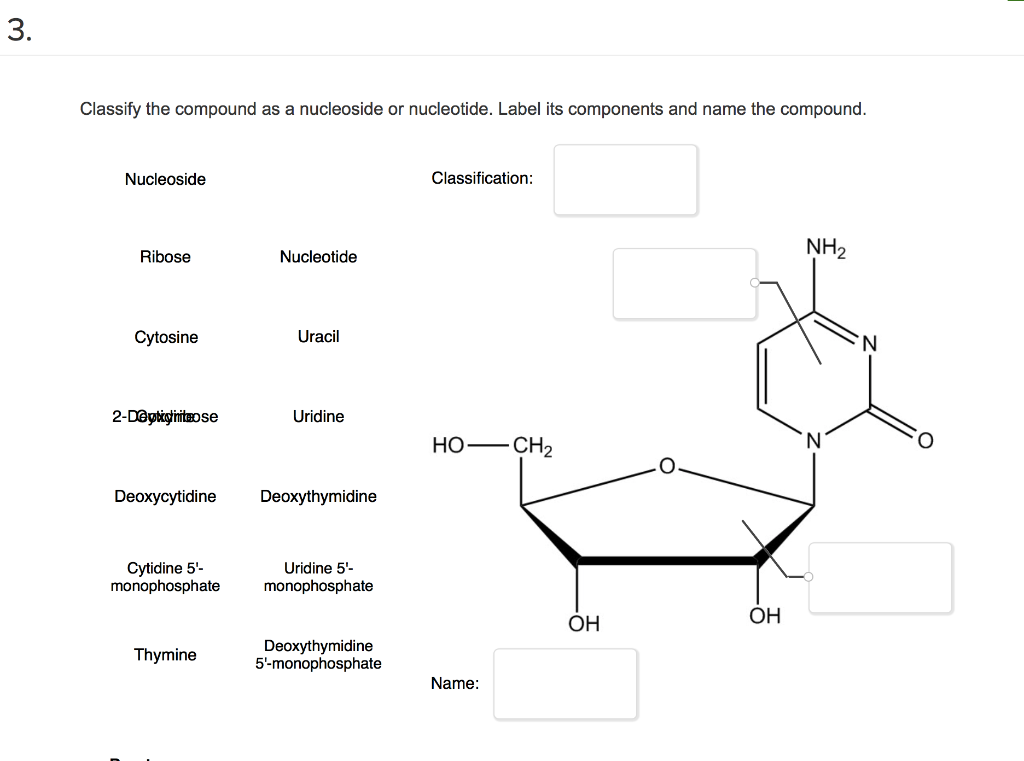
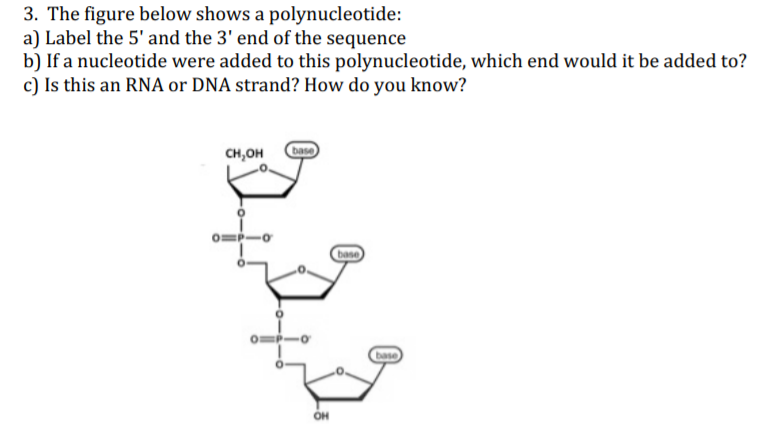

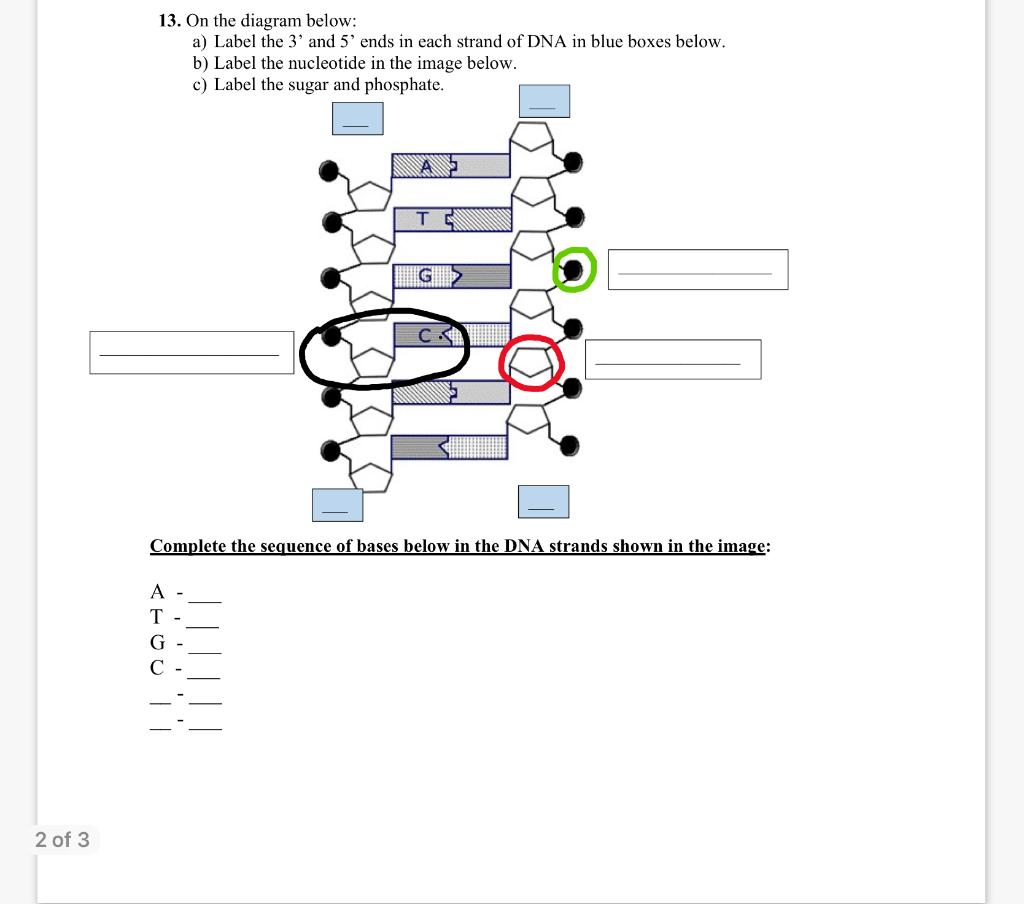

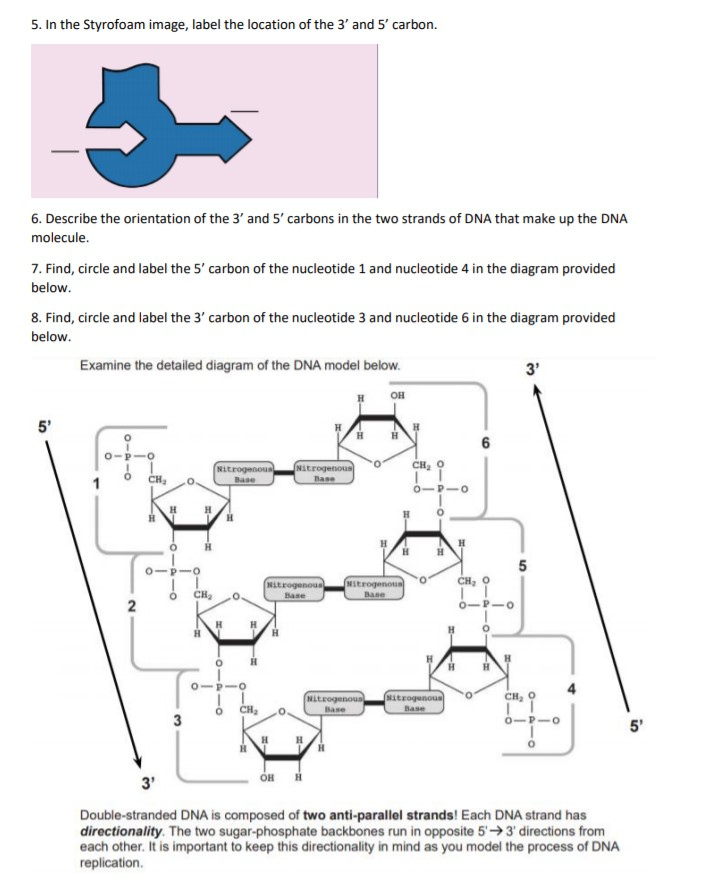
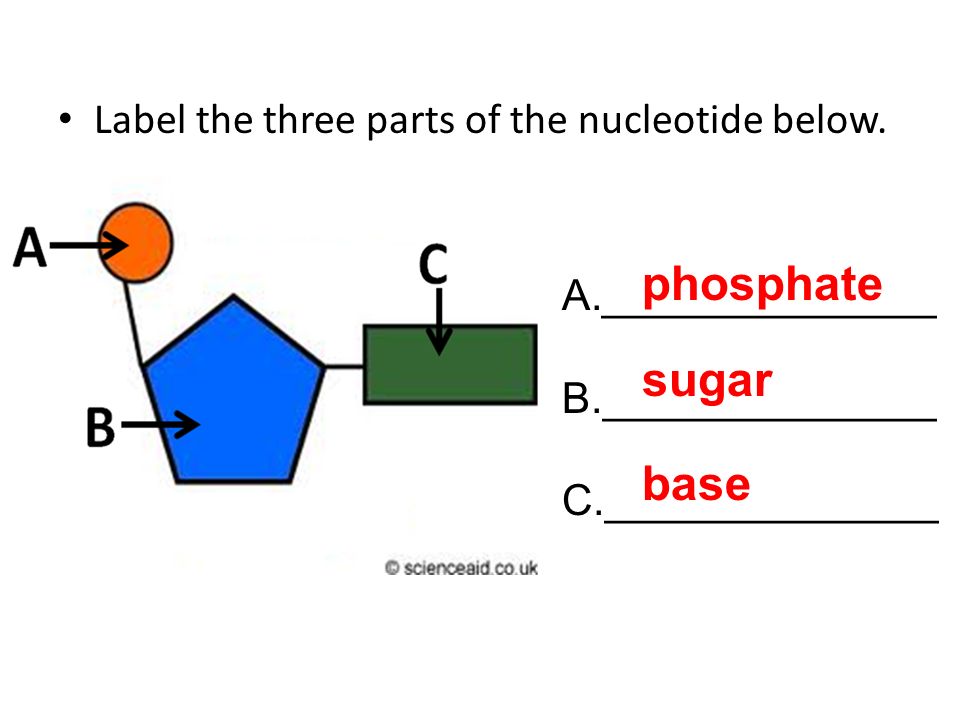



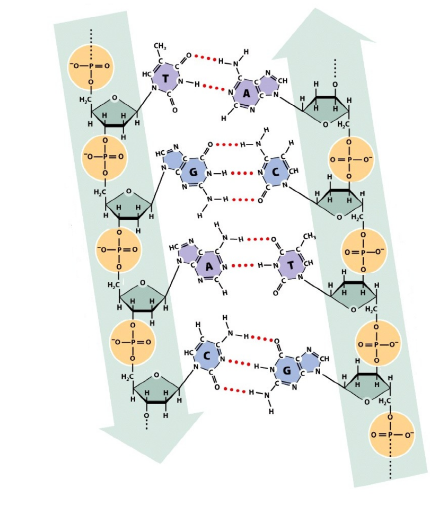
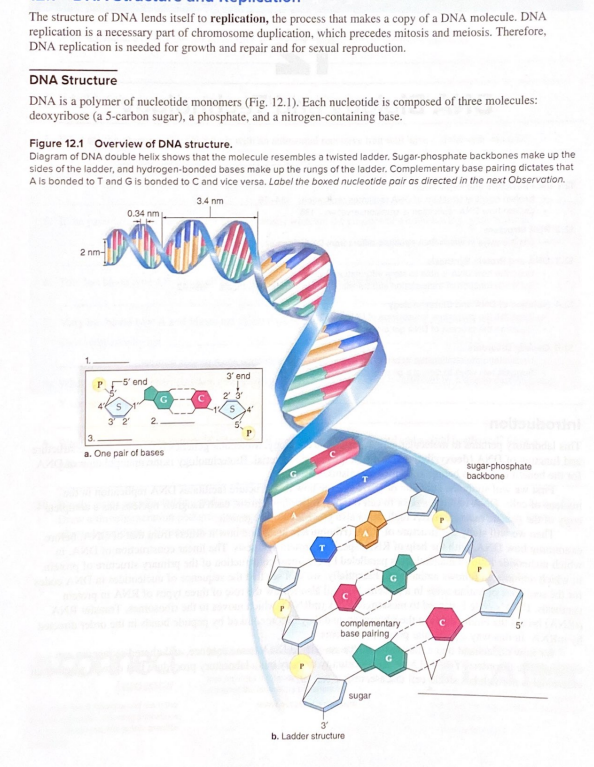
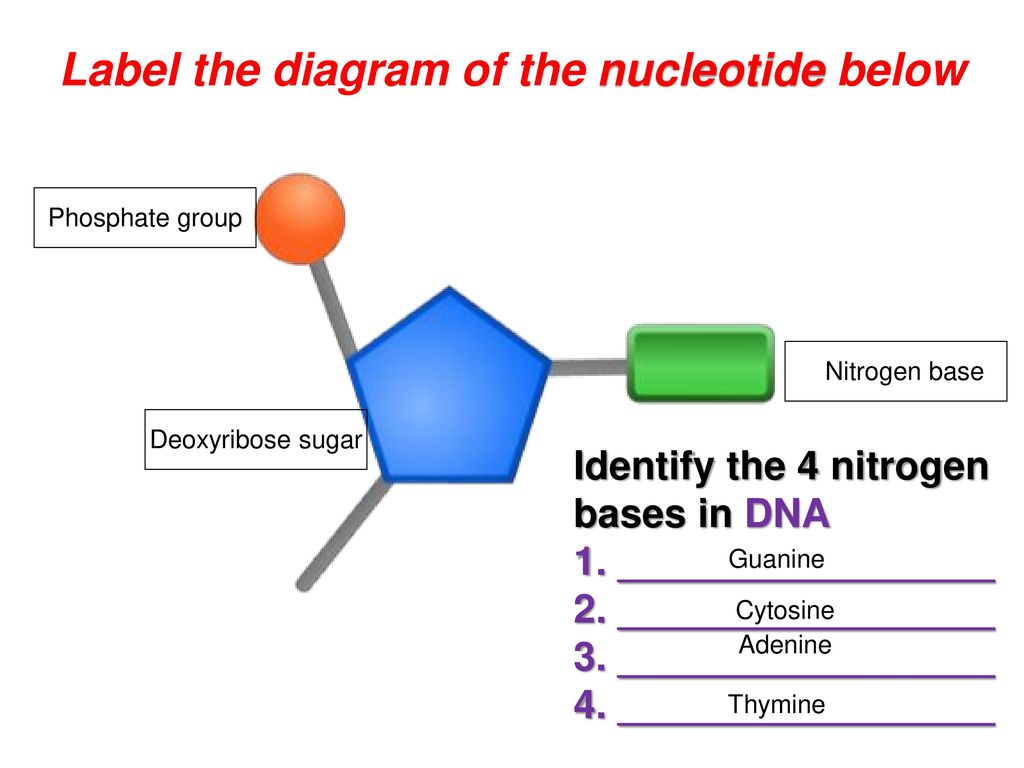

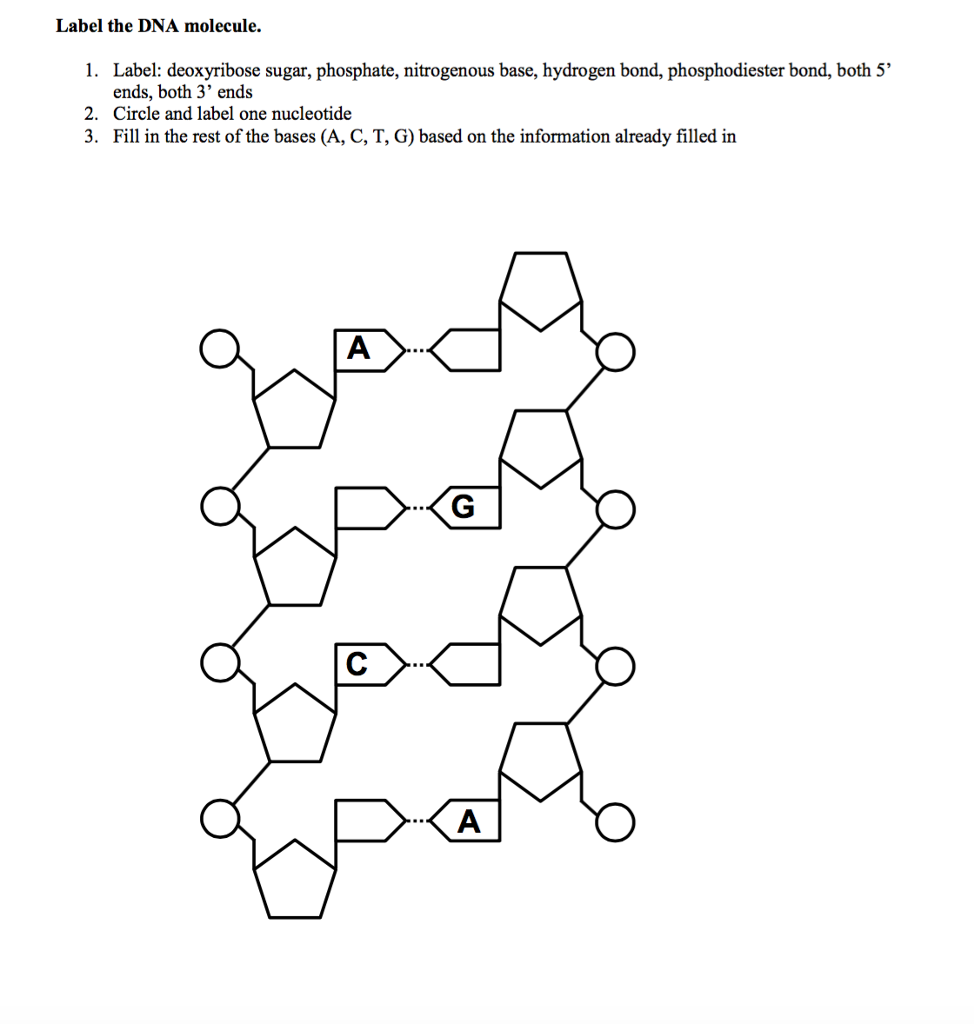
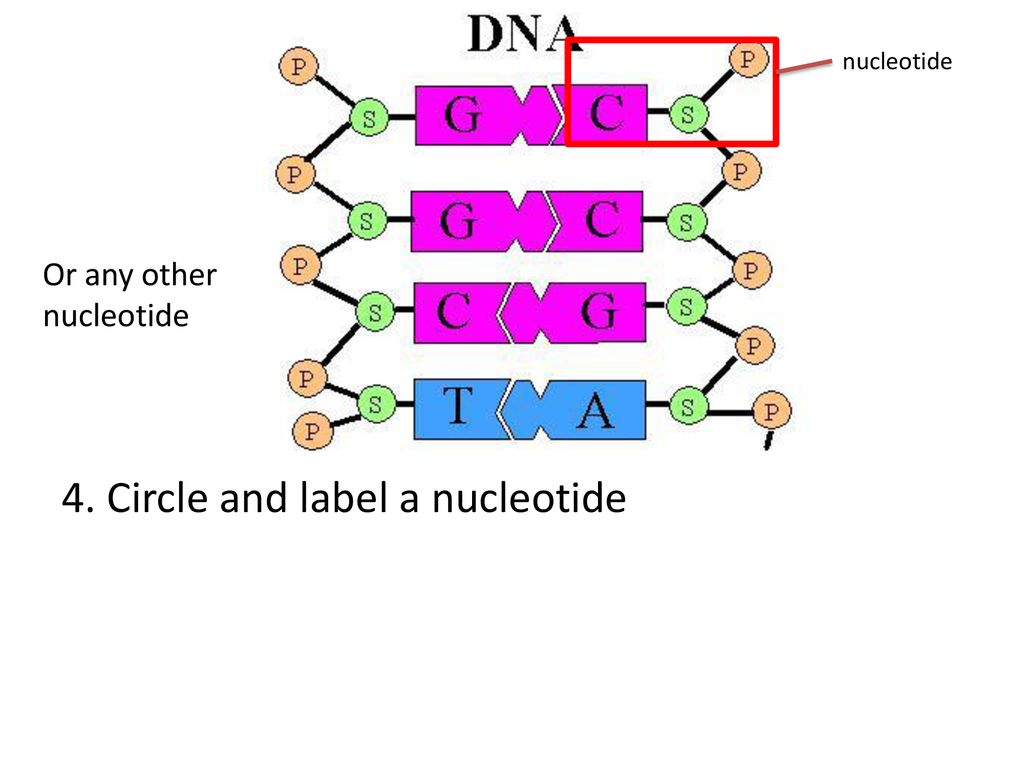
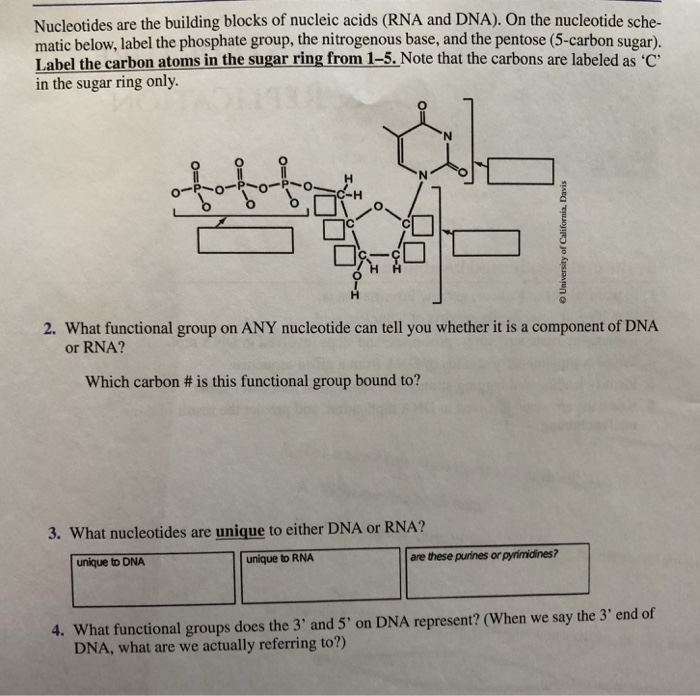


:max_bytes(150000):strip_icc()/dna-versus-rna-608191_sketch_Final-54acdd8f8af04c73817e8811c32905fa.png)

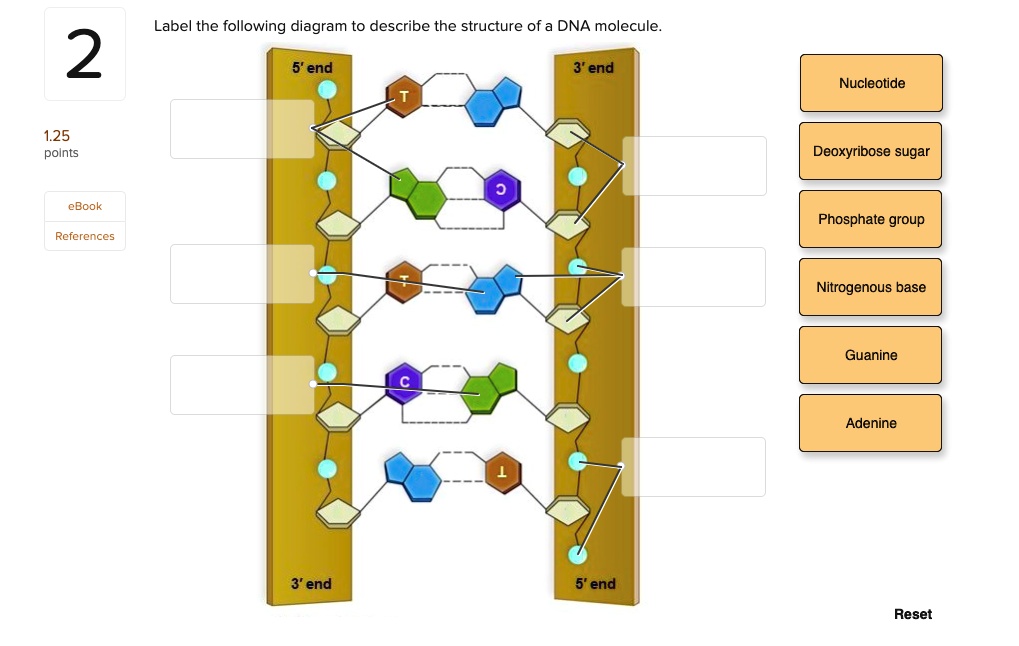
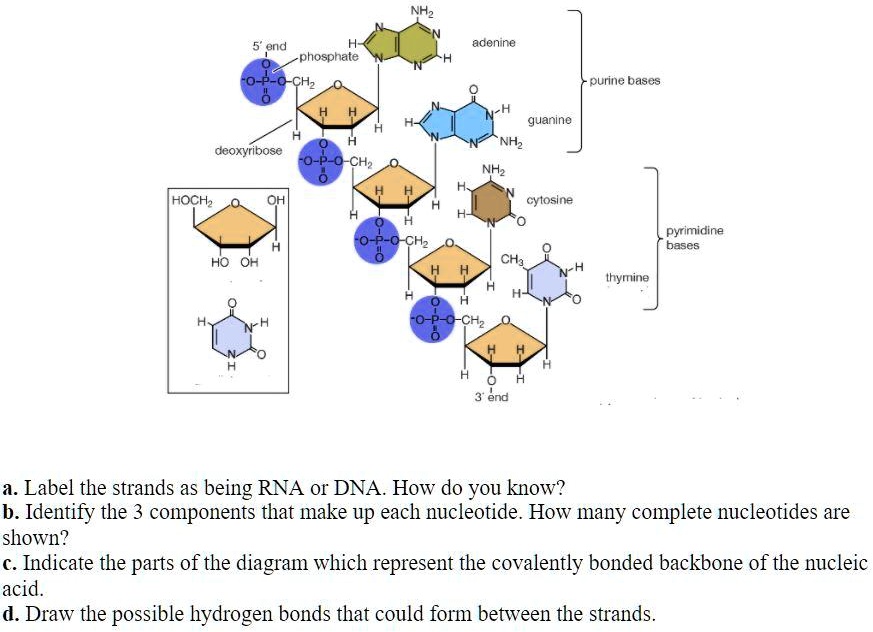
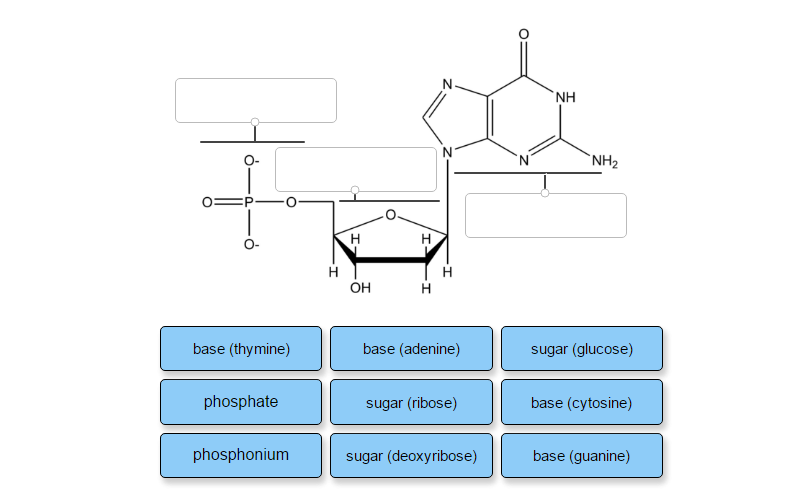

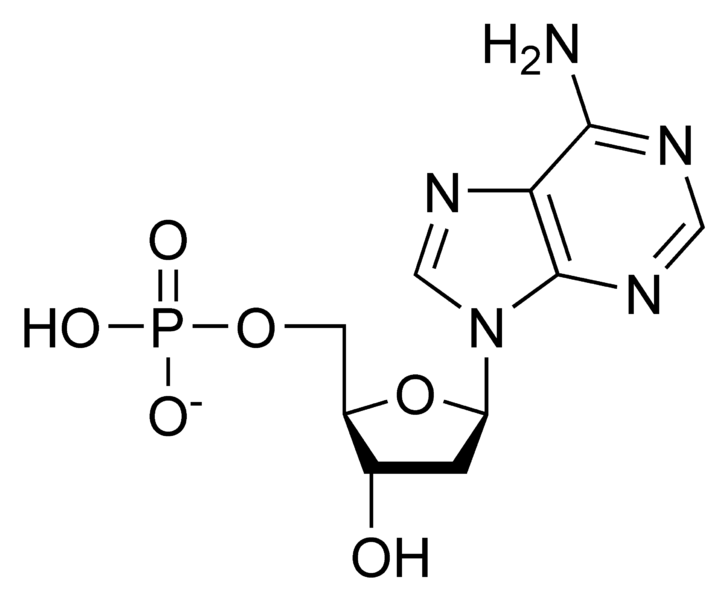
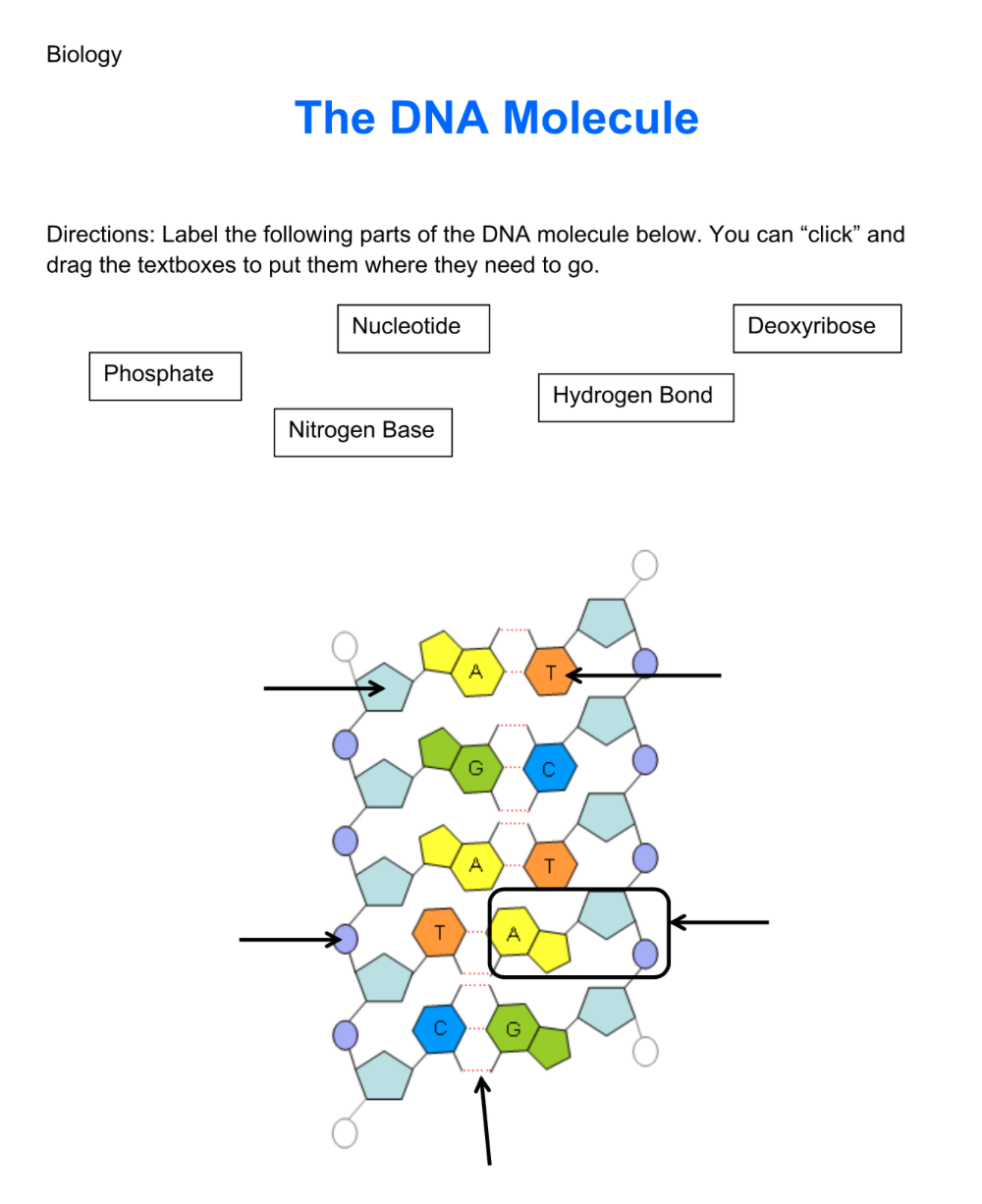

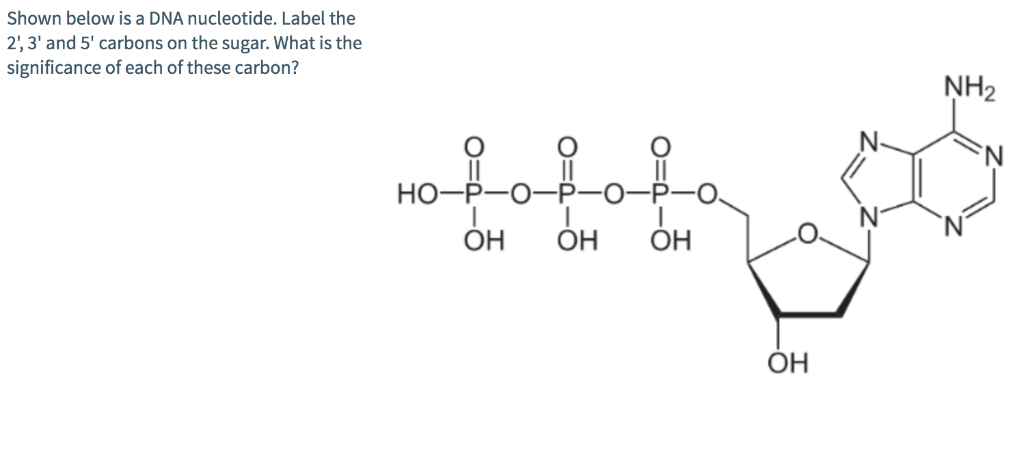


Post a Comment for "45 label of nucleotide"